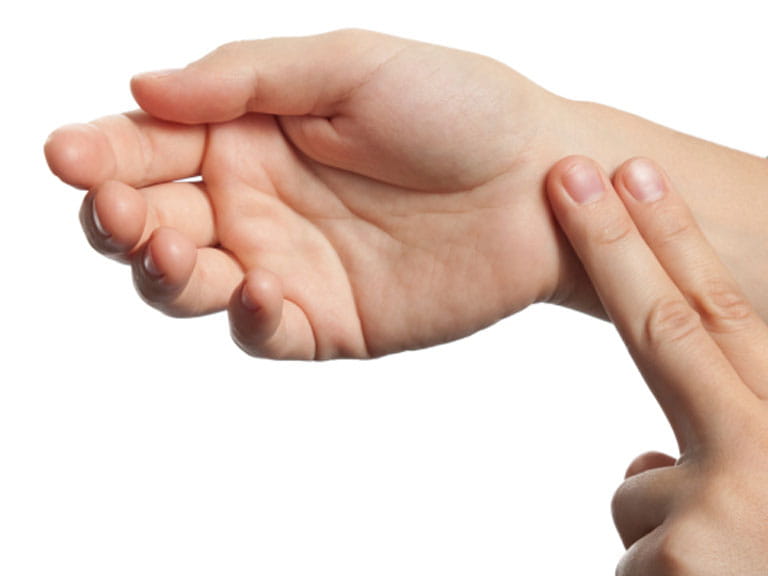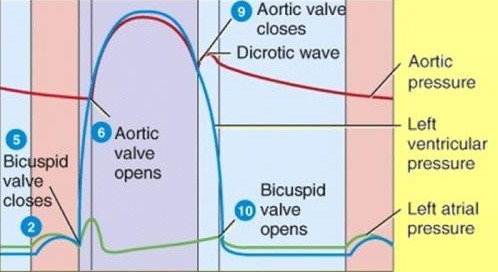Explain Why Pulse Pressure Is Different From Pulse Rate Quizlet
For example if the resting blood pressure is 12080 millimeters of mercury mm Hg the pulse. Explain why the values might be different or be similar.

How To Measure Your Pulse Blood Pressure Monitoring Saga
Aka the blood pressure cuff is a instrument used to obtain blood pressure readings by the ascultatory method.

. The top number is the maximum pressure the heart exerts while beating systolic pressure. Most people have a. When obtaining the pulse The medical assistant will assess the rate rhythm and.
Hence there will be a significant delay between the ECG. Pulse pressure is the difference between the upper and lower numbers of your blood pressure. What Are the Effects of Body Position and Exercise on the Characteristics and Rates of the Pulse.
It causes a change in blood pressure and pulse rate in the main arteries. The blood pressure and pulse are two very different measurements but they have the heart as their common denominator. In which position sitting reclining or standing is the blood.
September 28 2020 Posted by DrSamanthi. Increased diameter of the arterioles 4. Increased pulse rate 29.
Heartbeat within a minute. A normal pulse pressure range is between 40 and 60 mm Hg. A person with a blood pressure of 12080 systolicdiastolic would therefore have a pulse pressure of 40 mmHg.
Consists of an inflatable cuff with an attached pressure gage. How does exercise affect heart rate and breathing rate. A pulse pressure below this level is described as low or narrow.
Indicate increase by t and decrease by 1. On the other hand the pulse rate calculates the frequency in which palpable blood pressure surges in ones body. On the other hand pulse rate calculates the rate in which the blood pressure upsurges in the body.
Describe a patients position including hand and arm placement. Review Sheet 30513 24. Hemorrhage increased blood viscosity 5.
Pulse should be checked by the medical assistant with moderate pressure using the three middle fingers. The blood pressure consists of the pressure the blood exudes on the walls of the arteries as it flows through the body. Question No24 Answer - Pulse pressure is what generates the pulse felt calculated as the systolic pressure minus the di.
4060 mm Hg. Heart rate measures the contractions of a heart ie. Low pulse pressure can indicate.
A change in pulse pressure delta Pp is proportional to volume change delta-V but inversely proportional to arterial compliance C. The normal resting pulse rate in a healthy adult ranges from 60 to 100 beats per minute. Pulse pressure is an indicator of our heart health.
Delta Pp Delta VC. Explain why the timing of the QRS complex in the ECG and the maximum height of the pulse do not coincide. Pulse is a direct measure of how frequently the heart beats also known as the heart rate.
Comfortable position palm of the hand should be down and the arm should rest on a flat surface. View the full answer. This may occur for example in patients with a low stroke volume which may be seen in congestive heart failure stenosis of the aortic valve or significant blood loss following trauma.
Several factors affect your heart rate during exercise including your age level of fitness and rate of exertion. The electrical activity in the heart always precedes the mechanical contraction. A low pulse pressure is a small difference between your systolic and diastolic pressure.
Pulse pressure systolic pressure - diastolic pressure. In contrast a high or wide pulse pressure is. A pulse pressure reading is considered low when its less than 40 mm Hg.
Average pulse rate for infants. Blood pressure is typically given in two numbers the systolic pressure over the diastolic pressure. No they are different because the heart rate measures the rate of contraction of the heart and the pulse rate measures the change in blood pressure.
As cuff pressure is gradually released the. Since the pulse is produced by the rise in pressure from dia-stolic to systolic levels the difference between these two pressures is known as the pulse pressure. Generally a pulse pressure should be at least 25 percent of the systolic pressure.
The two forces at work during this process--known commonly as the readings or as systolic and diastolic--make up the blood pressure. The top number systolic minus the bottom number diastolic is the pulse pressure. Increased cardiac output 46.
Pulse rate is the number of heart beats that occur in 1 minute. Average pulse rate for adult women. Blood pressure is a measure of how much pressure is exerted against the walls of a blood vessel most typically an artery.
The heart rate is the measured value obtained per minute when listening to the sounds the heart produces. Pulse pressure tends to increase as you get older and this number can also be an indicator of health problems before you develop symptoms. The pulse rate is the measured value per minute when palpating the arterial vessels.
The heart rate and pulse rate difference is that heart rate measures the percentage of contractions of a heart ie. Furthermore a heartbeat pushes the blood throughout a human body. Explain why pulse pressure is different from pulse rate.
But you may overlook the role your body position can play in determining your heart rate during and. In some cases a low pulse pressure can also be a sign of a poorly functioning heart. Cleveland Clinic is a.
Because the change in volume is due to the stroke volume of blood ejected from the left ventricle SV we can approximate pulse pressure as. Referring to data in table 71 are the values of heart rate and pulse rate similar for each condition. Average pulse rate for adult men.
Cuff is placed around each arm and inflated to a pressure higher than systolic pressure to occlude circulation it the forearm. The bottom number is the amount of pressure in the arteries between beats diastolic pressure. What effect do the following have on blood pressure.
The key difference between pulse and pulse pressure is that pulse is a rhythmic beating in the arteries caused by the beating of the heart while pulse pressure is the difference between systolic blood pressure and diastolic blood pressure.

Exercise 33 Human Cardiovascular Physiology Blood Pressure And Pulse Determinations Flashcards Quizlet

16 3 Arterial Blood Pressure Diagram Quizlet

Exercise 33 Human Cardiovascular Physiology Blood Pressure And Pulse Determinations Flashcards Quizlet
Comments
Post a Comment